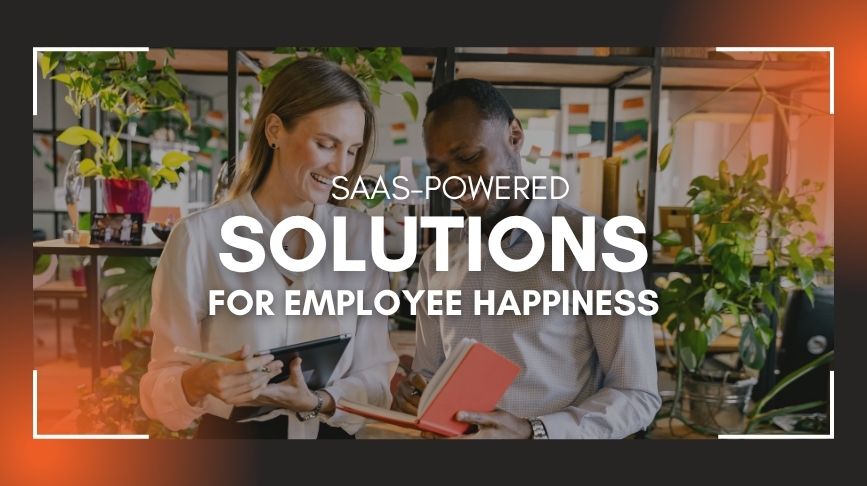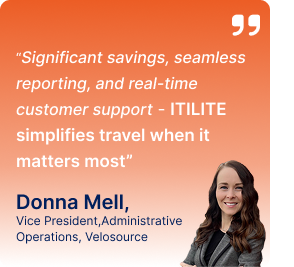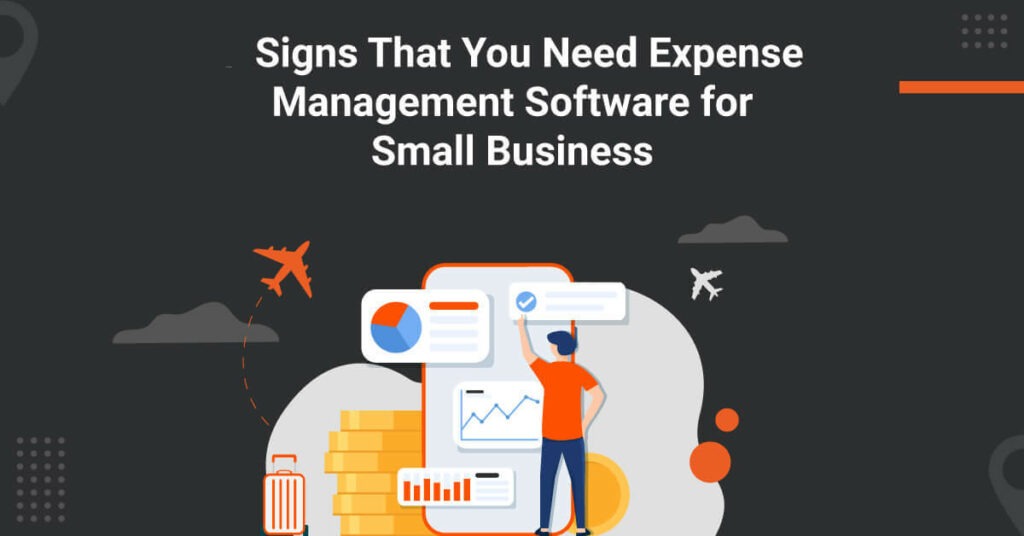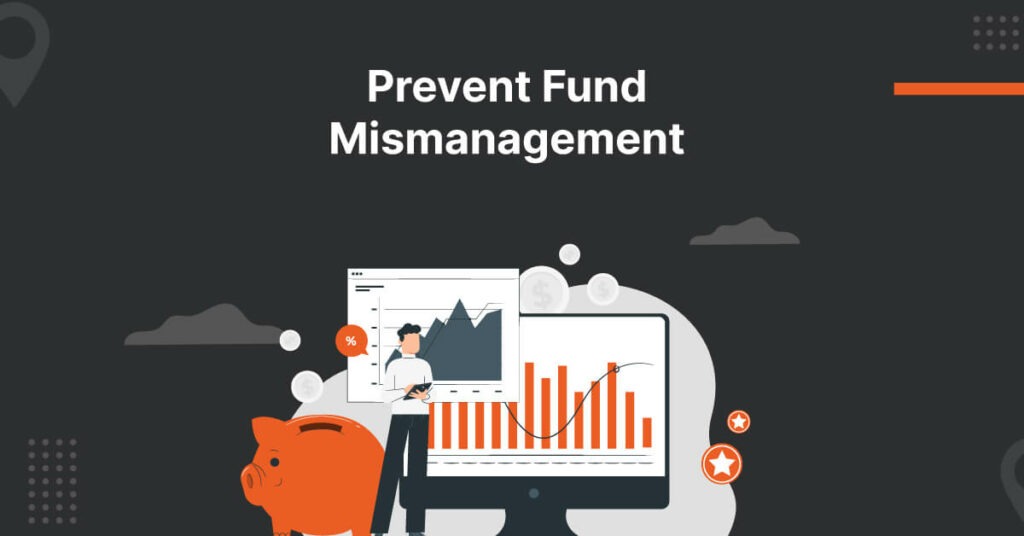
In the fast-paced and competitive corporate world, employee engagement has emerged as a critical factor that can make or break a company’s success. Engaged employees are more productive and contribute to a positive work culture, employee retention, and, ultimately, the bottom line.
As organizations strive to enhance corporate employee engagement, they turn to innovative solutions, such as Software-as-a-Service (SaaS) applications, to achieve their goals. This blog will explore the importance of employee engagement and discuss how SaaS solutions transform and how businesses nurture happy employees.
The Significance of Corporate Employee Engagement
Corporate employee engagement refers to employees’ commitment and involvement towards their organization. Engaged employees are enthusiastic about their work, align with the company’s goals, and are willing to go the extra mile to contribute to its success. On the contrary, disengaged employees may be physically present at work but need more motivation and passion for their roles.
The importance of corporate employee engagement cannot be overstated. Here are some key reasons why it matters:
- Increased Productivity: Engaged employees are more productive. They put in extra effort and are likelier to meet or exceed their performance goals.
- Enhanced Employee Retention: When employees are engaged, they are less likely to seek opportunities elsewhere. High turnover rates can be costly and disruptive for businesses.
- Improved Customer Satisfaction: Engaged employees provide excellent customer service, leading to higher customer satisfaction and loyalty.
- Innovation and Creativity: Engaged employees are likelier to share their ideas and contribute to organizational innovation.
- Positive Work Culture: Employee engagement contributes to a positive work culture, fostering collaboration, trust, and a sense of belonging among team members.
- Profitability: Engaged employees can directly impact an organization’s profitability through increased productivity and contributions to business growth.
Understanding Employee Engagement Expenses
Employee engagement expenses encompass various activities, programs, and tools to enhance the employee experience. These expenses can vary significantly from one organization to another, but some common examples include:
- Employee Recognition Programs: These programs include incentives, rewards, and recognition for employees who perform exceptionally well.
- Training and Development: Investing in the growth and development of employees through training, workshops, and education programs.
- Wellness Initiatives: Promoting employee well-being through fitness programs, health screenings, and mental health support.
- Communication Tools: Tools and platforms that facilitate communication and collaboration among employees, especially in remote or distributed teams.
- Team-Building Activities: Organizing events and activities to build team cohesion and foster a sense of belonging.
- Performance Management Systems: Implementing systems and tools to track employee performance and provide regular feedback.
- Workplace Environment: Investing in the physical workspace to create a comfortable and motivating atmosphere.
Benefits of SaaS Solutions for Corporate Employee Engagement Expense
- Cost-Effective Solutions
SaaS solutions are known for their cost-effectiveness. Instead of investing in expensive on-premises software or infrastructure, organizations can invest in SaaS applications on a pay-as-you-use basis. This means lower upfront costs and predictable monthly or annual expenses.
For employee engagement activities, this cost-effectiveness is particularly valuable. Organizations can access a wide range of SaaS tools that cater to different aspects of engagement without the need for significant capital investment. Whether it’s employee recognition platforms, wellness apps, or communication tools, SaaS options are available for every budget.
- Scalability and Flexibility
Corporate employee engagement ideas may need to scale up or down depending on organizational needs, workforce changes, or business priorities. SaaS solutions offer the flexibility to adjust resources and usage as required. This scalability is essential for organizations that want to adapt their engagement efforts to changing circumstances.
For example, if a company experiences rapid growth and needs to expand its recognition program to cover more employees, it can easily upgrade its subscription plan with a SaaS provider. Alternatively, during times of economic uncertainty, organizations can reduce their usage of specific SaaS tools to cut costs temporarily.
- Access Anytime, Anywhere
The modern workforce is increasingly dispersed, with remote and hybrid work arrangements becoming the norm. SaaS solutions are accessible from anywhere with an internet connection, making them ideal for organizations with remote employees or multiple office locations.
This accessibility ensures that engagement tools are available to all employees, regardless of their physical location. Whether employees work from the office, at home, or in a different country, they can still participate in recognition programs, access wellness resources, and engage with their colleagues through SaaS applications.
- Regular Updates and Maintainance
SaaS providers are responsible for maintaining and updating their software, relieving organizations of the burden of managing and securing on-premises systems. This saves time and ensures that engagement tools are always updated with the latest features and security measures.
For example, a SaaS-based employee recognition platform can continually evolve to include new features such as social recognition, gamification, or integration with other HR systems. These updates can enhance the effectiveness of engagement initiatives over time.
- Data-Driven Insights
One of the significant advantages of using SaaS solutions for corporate employee engagement is the ability to gather and analyze data. Many SaaS platforms provide detailed analytics and reporting capabilities, allowing organizations to track the impact of their engagement efforts.
With data-driven insights, businesses can identify trends, measure the success of specific programs, and make informed decisions about resource allocation. For example, if analytics reveal that a wellness initiative is not delivering the expected results, organizations can adjust their strategy or reallocate funds to more effective programs.
- Integration Capabilities
SaaS solutions are designed to integrate seamlessly with other software applications and systems. This integration capability is invaluable for organizations that want to create a unified and streamlined employee experience.
For example, SaaS-based travel management systems can integrate with HRMS platforms, making tracking employee performance, providing feedback, and aligning performance goals with organizational objectives easier. Such integrations eliminate data silos and enhance the overall efficiency of engagement efforts.
- Personalization and Communication
Every organization has unique employee engagement needs and culture. SaaS solutions often offer a high degree of personalization and customization, allowing businesses to tailor engagement programs to their specific requirements.
This flexibility means that organizations can create engagement initiatives that align with their workforce’s values, goals, and preferences. For instance, SaaS-based recognition platform can be customized to reflect the company’s brand, values, and reward preferences.
Cost Considerations and ROI
While SaaS solutions offer numerous benefits for managing employee engagement expenses, it’s essential for organizations to consider the cost-effectiveness and return on investment (ROI) of these tools. Here are some key factors to keep in mind:
- Total Cost of Ownership (TCO): When evaluating SaaS solutions, it’s important to consider the total cost of ownership, which includes subscription fees, integration costs, training expenses, and ongoing support. Organizations should ensure that the TCO aligns with their budget and expected ROI.
- Measuring ROI: To determine the ROI of employee engagement activities, organizations should establish key performance indicators (KPIs) and track them over time. These KPIs include employee satisfaction scores, productivity metrics, turnover rates, and customer satisfaction.
- Scalability: Organizations should assess whether the selected SaaS solutions can scale with the company’s growth and evolving engagement strategies. Scalability is crucial to avoid the need for frequent software changes.
- Data Security and Compliance: Ensure the chosen SaaS solutions adhere to data security and compliance standards, especially if they involve sensitive employee data. Non-compliance can lead to legal and financial consequences.
Employ the Best Corporate Employee Engagement Solution
Employee engagement is a critical driver of business success, impacting productivity, turnover rates, customer satisfaction, and profitability. While creating and maintaining a positive and engaging work environment involves expenses, SaaS solutions have emerged as valuable tools for managing and optimizing these costs.
If you are looking for the best SaaS-solution, then ITILITE is one of the best SaaS-based corporate travel management solutions. Our SaaS application offers cost-effectiveness, scalability, accessibility, and data-driven insights, making them ideal for organizations looking to enhance employee engagement while controlling expenses. This tool can help you gain advantage over your competitors in today’s competitive business marketplace.
Want to know more about our SaaS-based application? Book a free demo now.












